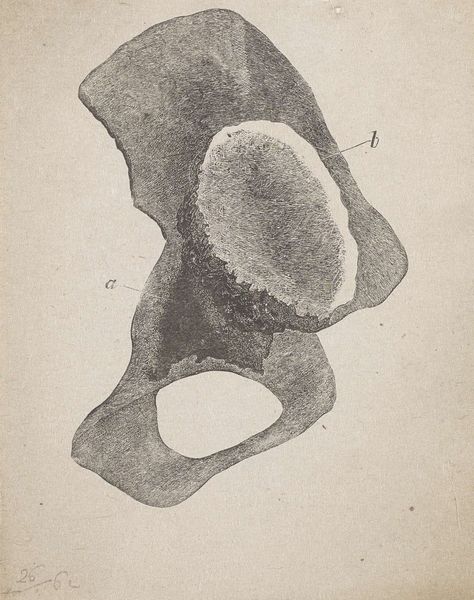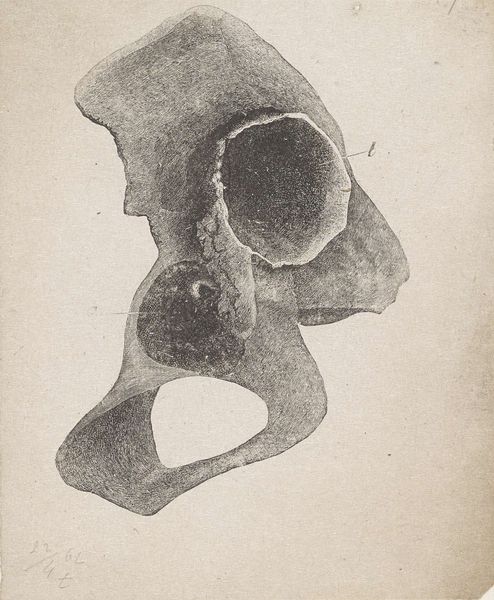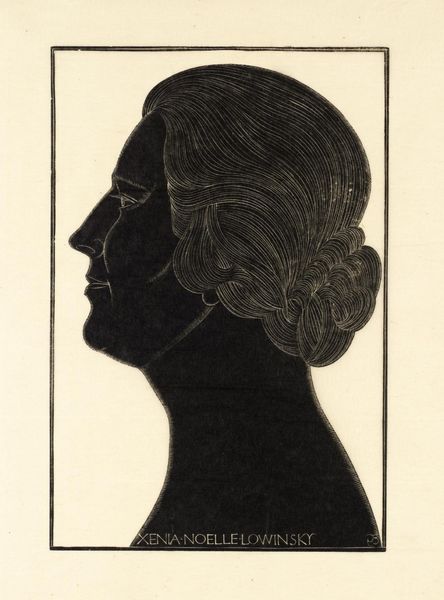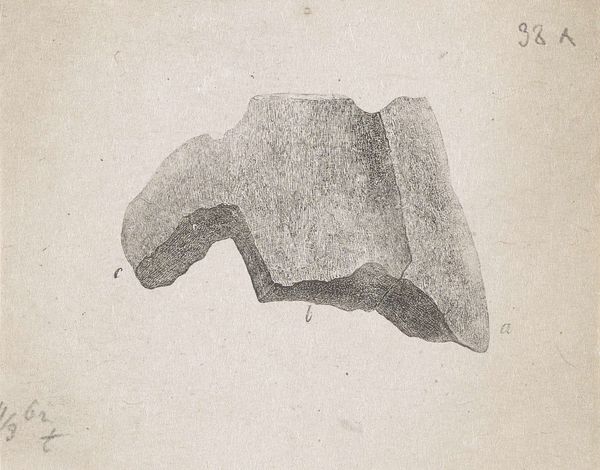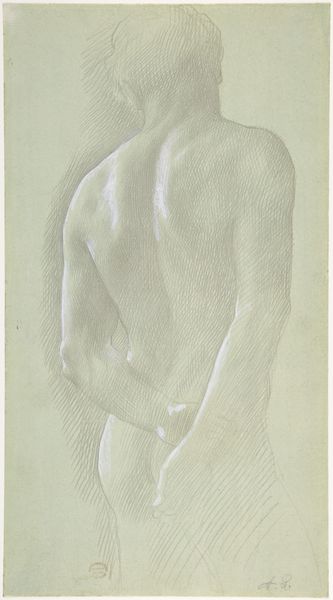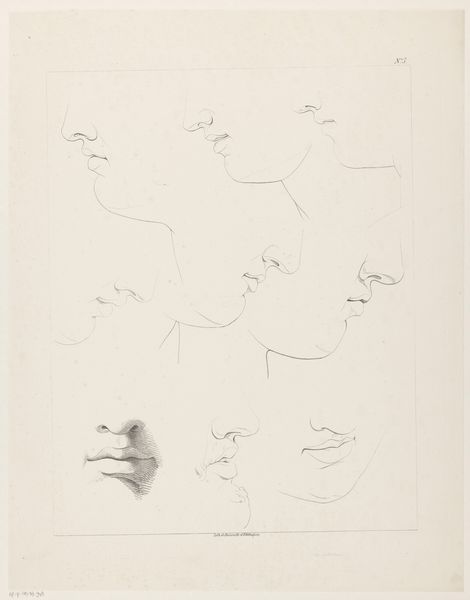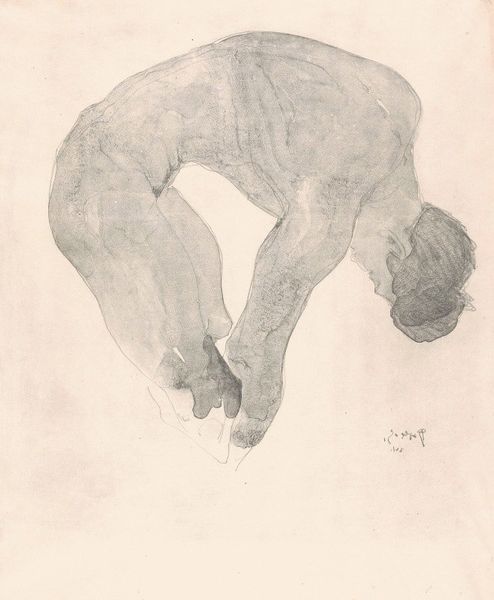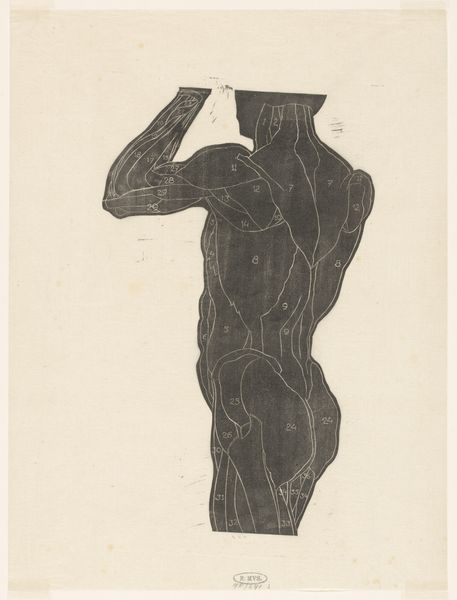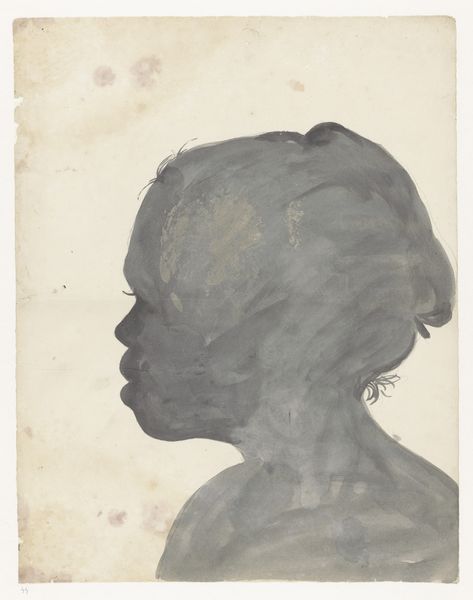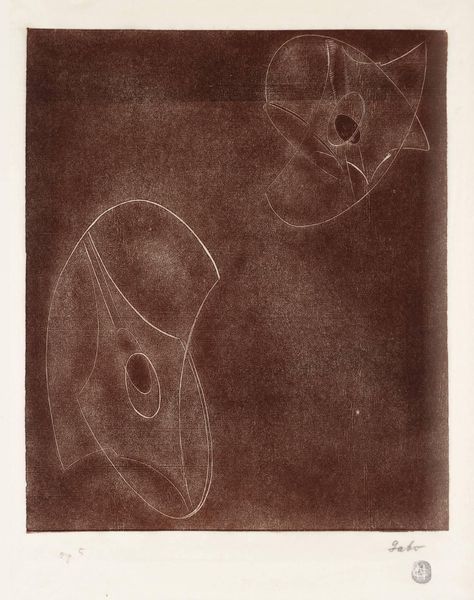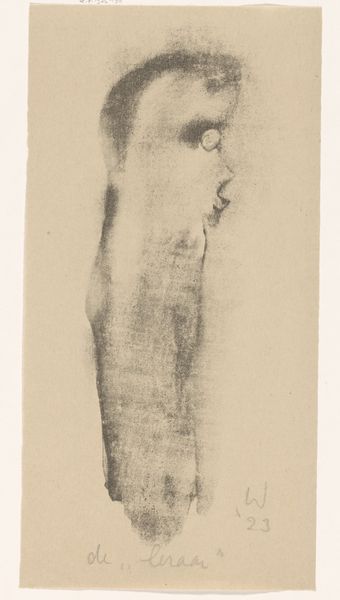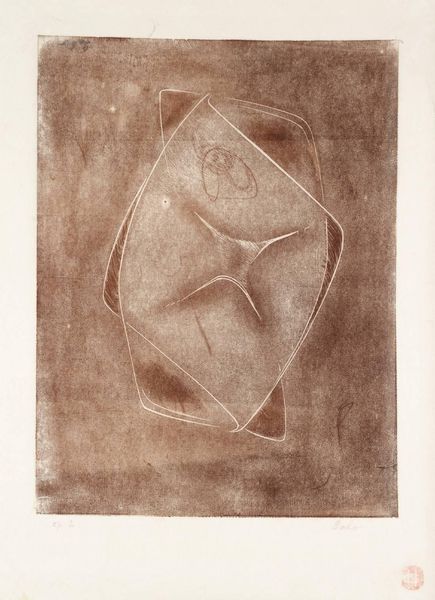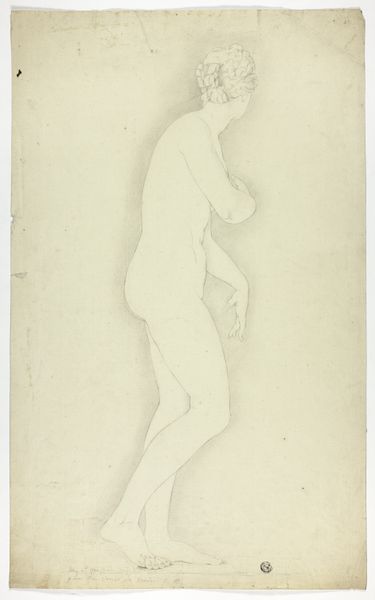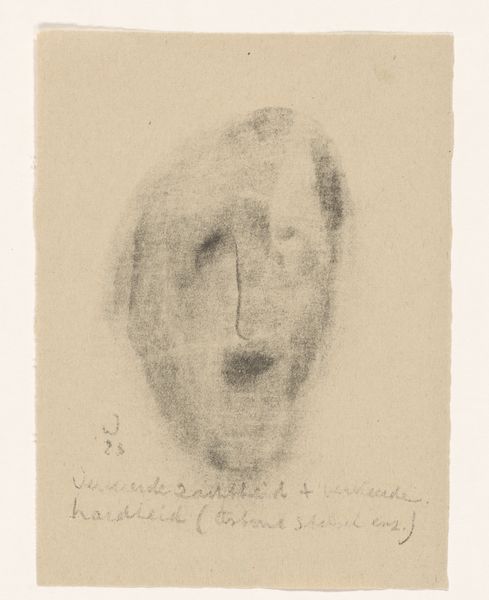
drawing, dry-media, pencil, graphite
#
pencil drawn
#
drawing
#
pencil sketch
#
charcoal drawing
#
form
#
dry-media
#
pencil drawing
#
pencil
#
line
#
graphite
#
academic-art
#
realism
Dimensions: height 99 mm, width 85 mm
Copyright: Rijks Museum: Open Domain
Curator: Up next, we have "Menselijk bot met een afwijking", or "Human Bone with an Anomaly," a drawing created sometime between 1836 and 1912 by Isaac Weissenbruch. It's currently held here at the Rijksmuseum. Editor: My initial impression is one of stark simplicity. The use of pencil or charcoal gives the bone a raw, almost fossilized appearance against the light paper. Curator: Yes, the piece showcases Weissenbruch's skills in rendering form through the manipulation of light and shadow. It is very much in line with the academic artistic practices dominant during that period, emphasizing the study and faithful reproduction of natural forms. Editor: I see a lot more here than just form. The image evokes a sense of fragility and mortality. Bones, of course, are age-old symbols for what remains, a vestige, a memento mori. It really plays into the anxiety around human limitations. Curator: And, this drawing could easily serve didactic purposes within an institution. The focus on the bone's anomalous nature suggests its use in medical studies, in the same way these visual records documented physical particularities that interested medical institutions. Editor: The anomaly itself could bear symbolic weight. Perhaps it is meant to reveal our vulnerability. The very idea that something intrinsic can be imperfect invites reflection. Is this the body failing itself, or perhaps society failing the body? Curator: Or more immediately the body in old age - during the late 19th and early 20th century, medical science went through so many changes that in turn informed social and artistic understandings of life and the human condition. The piece subtly gestures towards debates within scientific circles at the time. Editor: I suppose seeing a work like this in a museum, divorced from its possible medical purpose, lets it transform into a contemplative piece on our very existence, as viewers meditate on our own fleeting being. Curator: Ultimately, what makes this seemingly straightforward drawing resonate is its intersection of scientific observation, the artist's technical skills, and, as you mentioned, the age-old motifs around death and physical being that are intrinsic to the human experience. Editor: Indeed, this is an unnerving intersection of science, symbolism, and society’s understanding of what makes us human, prompting us to meditate on a singular representation that may in turn tell stories about all of us.
Comments
No comments
Be the first to comment and join the conversation on the ultimate creative platform.
